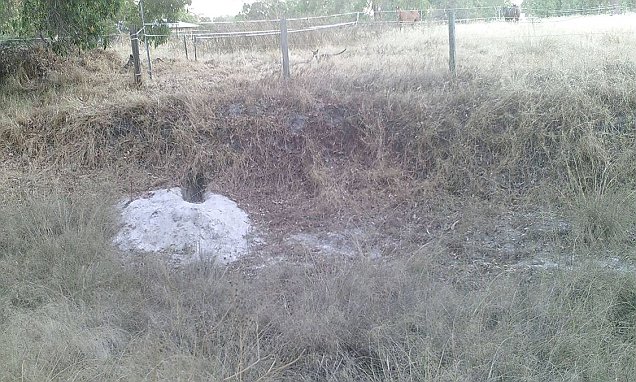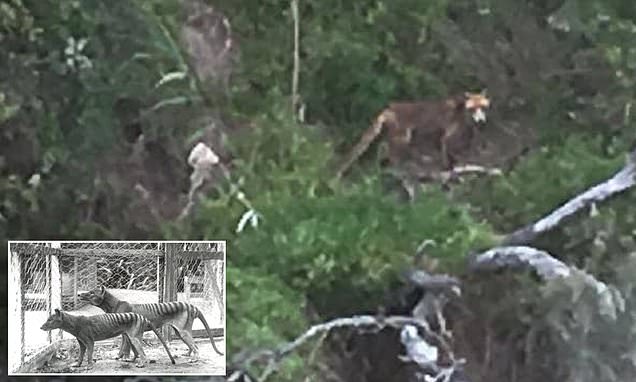This seems like a good time to drum home the
comparison between the extinction of the Thylacine and the extinction of the Ivory-billed Woodpecker.
1) Both species were last documented at around the same time -1936 for the Thylacine and 1939 (last accepted IBWO sighting in 1944). Thylacines formerly occurred on the Australian mainland but there there is no proof they survived more recently than 3000 years ago.
2) Reports of both species have continued
to the present day, for example the Department of Conservation and Land Management recorded 203 reports of sightings of the Thylacine in Western (mainland) Australia from 1936 to 1998.
3) Both species have had expensive official searches conducted and support from government, the Thylacine searches in Tasmania were conducted In 1982 following a sighting by a researcher with the Tasmania Parks and Wildlife Service. Those for IBWO because of sightings by birders, some experienced.
4) Official searches for both species failed to yield confirmatory evidence despite huge efforts and were eventually disbanded.
5) Both species have a huge scientific literature surrounding their extinction trajectory on account of their well-described declines to extinction and abundance of possible records.
6) 'Amateur' searchers are obsessed with both species and maintain that the Thylacine is widespread on both Tasmania and in mainland Australia and that the IBWO is distributed across multiple US states. Their blogs constantly report sightings with low quality evidence.
7) The searchers are reliant on brief sightings, poor quality images, tracks and signs, and ambiguous audio recordings. These are regularly presented as proof that both species are still extant, some examples in newspaper reporting:
A trail camera has captured an image that has sparked a debate whether one of Australia's lost animals has a sub-species living in Perth.

www.dailymail.co.uk
A farmer in Victoria spotted the creature while out walking near Clifton Springs on Friday, and managed to take a quick snap on his mobile phone.

www.dailymail.co.uk
8) There is no vouchered audio recording of the Thylacine so we have no way of knowing if the claimed recordings are of that species. Similar problems surround IBWO recordings - e.g. drums.
9) There are huge unclaimed bounties (over
AU$ 1.75M for the Thylacine) for documentation proving either species exists.
10) Dedicated searchers are employing technology like drones and autonomous recording units to look for both species e.g.
https://www.abc.net.au/news/2019-09...tigers-with-science-and-stealth/11388354?nw=0 again without success.
11) The searchers in both camps complain that the authorities don't take their claims seriously and deride experts, both sometimes publish their findings in scientific journals. Their blogs are
incredibly similar in the language they use and their cultural identity as self-styled hard men who venture into remote areas into which others won't go and hence lack of success. This narrative creeps into scientific publications, this from
Collins 2017:
"The interior of a swamp forest’s low species diversity does not attract bird watchers [12], and numerous deterrents may keep them away. It is physically demanding to penetrate deeply into such habitats; alligators, wild boars, and venomous snakes are abundant; and there is the possibility of heat stroke during the hot and humid summers and hypothermia during the cold and damp winters. Strong currents, rapidly rising water, and heavy hunting activity make swamp forests dangerous."
12) There have been many TV programmes covering the searchers from the perspective of these dedicated amateurs. In all of them the searchers maintain the species are extant, that they regularly see them and that proof is around the corner. Sometimes they claim they have it -
like here but it always comes of nothing.
13) In both cases one could say that there is an overwhelming body of evidence that they are extant, hundreds of sightings, many by authoritative figures.
14) In both cases the absence of proof - photos, video, DNA, specimens - is indicative that the 'an overwhelming body of evidence' is nonsense - if the species are widespread the proof would be easy to find. As such it is reasonable to conclude that both are extinct and that belief in them has become quasi-religious and detached from objective scientific reality.








